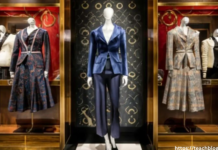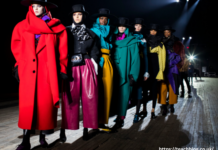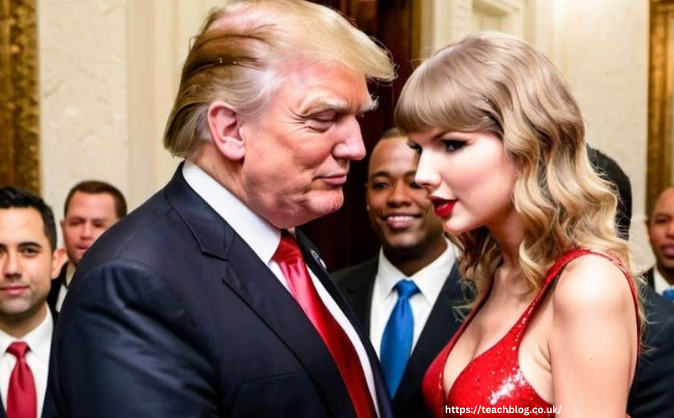In recent years, the intersection of artificial intelligence (AI) and popular culture has taken on a life of its own, leading to some fascinating—and sometimes unsettling—creations. One of the most talked-about phenomena is the rise of AI-generated content featuring none other than global pop sensation Taylor Swift. From AI-generated images to deepfake videos, the Taylor Swift AI phenomenon raises significant questions about the future of technology, creativity, and regulation.
Table of Contents
Introduction to Taylor Swift AI
Taylor Swift, an artist known for her profound influence on the music industry, has found herself at the center of a new digital trend: AI-generated content. While Swift’s actual work has been shaped by her distinct voice, lyrical prowess, and personal experiences, AI-generated versions of her image and voice are emerging as a controversial yet captivating topic. These AI creations range from simple digital manipulations to complex deepfakes that mimic her likeness and voice with remarkable accuracy.
The fascination with Taylor Swift AI is rooted in a broader cultural movement that combines advanced technology with celebrity culture. Fans and tech enthusiasts alike are intrigued by the possibilities, but there’s also growing concern about the ethical implications of such creations. Understanding what Taylor Swift AI is and how it’s being used is essential for navigating this new frontier.
What Are the Taylor Swift AI Pictures?
The term “Taylor Swift AI pictures” refers to images that have been generated or altered using artificial intelligence to create or modify visuals that resemble Taylor Swift. These images can be produced through a variety of AI techniques, including neural networks, generative adversarial networks (GANs), and deep learning algorithms. The results range from realistic to fantastical, with some images appearing indistinguishable from real photographs of the singer.
One of the most common methods used to create Taylor Swift AI pictures is deepfake technology. Deepfakes involve training an AI model on a vast dataset of images and videos of Taylor Swift, allowing the AI to generate new images that mimic her appearance. These deepfakes can be incredibly convincing, leading to debates about their potential misuse, particularly in the realm of misinformation and privacy violations.
Beyond deepfakes, AI tools like GANs have been used to generate entirely new images of Taylor Swift, often blending her features with other artistic elements. These creations can be used for fan art, promotional content, or even as part of AI-generated music videos. While some view these images as innovative and creative, others worry about the ethical boundaries being crossed.
The Future of AI Regulation
The rapid advancement of AI technology, particularly in the creation of celebrity deepfakes like those involving Taylor Swift, has sparked urgent discussions about the need for regulation. As AI-generated content becomes increasingly sophisticated, the potential for harm grows. Misinformation, identity theft, and the unauthorized use of a person’s likeness are just a few of the concerns that regulators and policymakers must address.
Currently, AI regulation is still in its infancy. While some countries have begun to implement laws to combat the misuse of AI, such as banning certain types of deepfakes, there is no global consensus on how to regulate this technology. The challenge lies in balancing the promotion of innovation with the protection of individual rights and privacy.
For artists like Taylor Swift, the implications of AI technology are profound. The ability of AI to create images and videos that closely resemble her raises questions about ownership and control. Who owns the rights to AI-generated images of Taylor Swift? Can these images be used without her consent? These are complex legal issues that will likely take years to resolve.
Moreover, the development of AI tools that can generate hyper-realistic content poses a threat to public trust. As it becomes harder to distinguish between real and AI-generated content, the potential for manipulation increases. In response, tech companies and governments may need to implement stricter guidelines for AI development and usage, particularly when it comes to content featuring public figures like Taylor Swift.
How Are the Fake Taylor Swift AI Creations Made?
Creating fake Taylor Swift AI content involves a combination of machine learning techniques and vast amounts of data. The process typically starts with gathering a large dataset of images, videos, and audio recordings of Taylor Swift. This data is then used to train an AI model, which learns to generate new content that mimics her appearance and voice.
Deep learning algorithms play a crucial role in this process. By analyzing the data, the AI model learns to recognize patterns in Swift’s facial features, expressions, and vocal tones. The more data the AI has, the more accurate and realistic the generated content becomes.
One of the most common applications of this technology is in the creation of deepfake videos. In these videos, the AI superimposes Swift’s likeness onto another person’s body, creating the illusion that she is saying or doing something that she never actually did. These videos can be highly convincing, making it difficult for viewers to discern their authenticity.
In addition to deepfake videos, AI is also being used to create audio deepfakes of Taylor Swift. These audio deepfakes involve generating a synthetic voice that sounds remarkably like Swift’s, which can then be used to create new songs, voiceovers, or even manipulated interviews. The technology behind audio deepfakes is advancing rapidly, with some AI-generated voices becoming nearly indistinguishable from the real thing.
Conclusion
The Taylor Swift AI phenomenon is a striking example of how artificial intelligence is reshaping the way we interact with celebrity culture. While the technology behind these creations is undoubtedly impressive, it also raises significant ethical and legal questions. As AI continues to evolve, the need for clear regulations and guidelines will become increasingly important to protect both individuals and society at large.
For fans of Taylor Swift and tech enthusiasts alike, the Taylor Swift AI phenomenon offers a glimpse into the future of digital content. However, it also serves as a reminder of the responsibilities that come with such powerful technology. As we navigate this new landscape, it will be crucial to strike a balance between innovation and ethics, ensuring that AI is used in ways that respect the rights and dignity of all individuals, including public figures like Taylor Swift.



















